
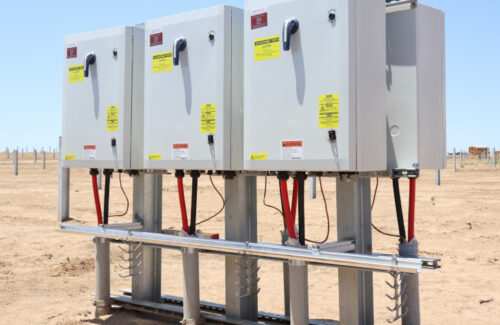
Affordable Wire Management (AWM) has launched its SUMAC rails to the utility grade solar industry. The line management system optimized for cluster circuit breaker boxes eliminates the need for cable trays. SUMAC rails are compatible with AWM's Arden and Pinyon hangers. The hanger can be securely connected to the SUMAC rail using the same single crimping process as the AWM hanger. SUMAC is a sag free load-bearing cable replacement designed for short distance scenarios that require precise cable layout. Aluminum alloy tracks can help cable management systems safely navigate tracker drive lines and other critical areas. SUMAC does not require end columns, it replaces the cable trays, cable ties, and clamps required for these arrangements. It can withstand additional loads without the need to place extra piles around the disconnector cluster and drive lines. Our SUMAC track sets industry-leading standards in safety, reliability, and availability, "said Scott Rand, CEO and co-founder of AWM. In addition, replacing cable trays with SUMAC means less material consumption, lowest labor costs, and the advantage of zero sag. SUMAC achieves unified cable layout throughout the entire site, which also means uniformity in current carrying capacity. The steel and O&M costs of public utility scale projects have significantly decreased This product does not contain polymer materials and has a service life of over 40 years. It can withstand all weather conditions: temperatures ranging from -40 ° C to+150 ° C, extreme ice and snow loads, and corrosive environments.
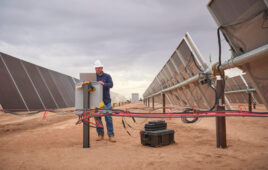
Fluke has launched two new products today - the Fluke 283 FC solar digital multimeter and the Fluke a283 FC true RMS wireless clamp meter, which enable solar professionals to work more confidently without compromising safety in high voltage environments, such as testing individual panels, strings, or inverters in utility scale solar photovoltaic arrays. Fluke's new 283 FC digital multimeter aims to improve safety and productivity while providing accurate, reliable, and reproducible results for technicians. The Fluke 283 FC/PV solar kit includes CAT III 1500 V DC safety grade accessories, allowing technicians to work confidently in high voltage environments. With the Staubli MC4 test leads, professionals can quickly, reliably, and safely connect to modules or strings to test DC voltages up to 1500 V, making it ideal for utility operations. The TL175-HV CAT III 1500 V/CAT IV 1000 V rated silicone test leads can flexibly test the voltage, millivolts, resistance, continuity, and capacitance on inverters, combiner boxes, photovoltaic arrays, and individual photovoltaic modules. Jason Waxman, President of Fluke, stated, "Our digital multimeter is renowned for its exceptional accuracy, durability, and safety, making it the preferred choice for professionals in various industries for reliable and precise measurements. The Fluke 283 FC has a unique advantage in meeting the needs of this market, with both CAT III 1500 and CAT IV 1000 ratings, prioritizing features that improve efficiency, safety, and reliability. For solar professionals, this is a powerful integrated tool The a283 FC True RMS wireless current clamp simplifies the troubleshooting process without compromising safety and reliability. It can measure AC and DC currents up to 60 A, ensuring accurate readings for solar installations, electrical systems, and industrial equipment. Its thin jaws are designed specifically for narrow spaces such as combiner boxes or inverters. Non contact design prioritizes safety and enables safe connections without the need to touch live wires. In addition, wireless connections eliminate the hassle of wire entanglement and can be measured from a safe distance. With the help of Fluke 283 FC digital multimeter and a283 FC wireless clamp, technicians can simultaneously measure voltage and current and automatically calculate VA power. This feature does not require changing measurement settings and can seamlessly and efficiently collect data on site. By utilizing Fluke Connect and Fluke cloud storage capabilities, 283 FC users can enjoy an enhanced troubleshooting experience, as 283 FC can transmit measurement results to smartphones or tablets for detailed analysis, and then upload them to the cloud.
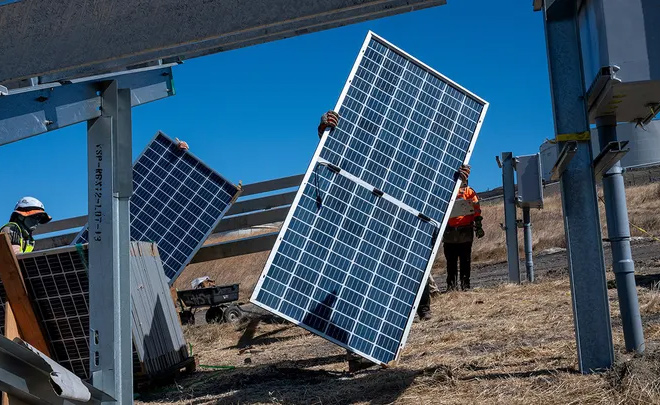
According to the "US Solar Market Insights Q3 2024 Report" released today by the Solar Energy Industry Association of America (SEIA) and Wood Mackenzie, as the solar industry installed 9.4 gigawatts of new generation capacity in Q2 2024, federal clean energy policies continue to drive manufacturing and deployment growth. Within two years of the implementation of the IRA, the solar industry added 75 gigawatts of installed capacity to the grid, accounting for over 36% of the historical solar power generation capacity in the United States. Since the IRA was passed, nearly 1.5 million American households have installed solar energy. SEIA President and CEO Abigail Ross Hopper said, "The solar and energy storage industry is putting federal clean energy policies into action, rapidly creating job opportunities, and driving economic growth in all 50 states in the United States, especially Arizona, Nevada, and Georgia. We are currently producing a historic high of solar energy in the United States, and soon we will have enough domestic module production to meet almost all of America's demand in the coming years Texas continues to dominate the solar energy market, with 5.5 gigawatts of solar capacity installed in the first half of 2024, leading the United States. Texas, Florida, Nevada, Ohio, and Arizona, which were highly anticipated in the November elections this year, are all among the top ten states in terms of solar capacity in 2024. The solar industry performed exceptionally well in the second quarter, mainly due to the growth in the utility scale sector, "said Michelle Davis, Global Head of Solar Energy at Wood Mackenzie and lead author of the report. However, the future growth of solar energy is hindered by broader challenges in the power industry, such as backlogs in interconnectivity, shortages of electrical equipment, and limited labor supply. The industry also faces uncertainty related to newly proposed tariffs and presidential elections. Currently, there are many issues in the solar energy industry that need to be addressed Affected by policy changes in California and high national interest rates, the residential solar market continued to shrink in the second quarter of 2024. The industry added 1.1 gigawatts of production capacity in the second quarter, the lowest in nearly three years. However, the residential solar energy market is expected to grow again in 2025 and is expected to set an annual record in 2026-2029. As the solar energy industry addresses the aforementioned challenges, the annual installed capacity of solar energy is expected to increase by an average of 4% in the coming years. By 2029, the total installed solar capacity in the United States is expected to double to 440 gigawatts. According to the "US Solar Market Insights Q3 2024 Report" released today by the Solar Energy Industry Association of America (SEIA) and Wood Mackenzie, as the solar industry installed 9.4 gigawatts of new generation capacity in Q2 2024, federal clean...
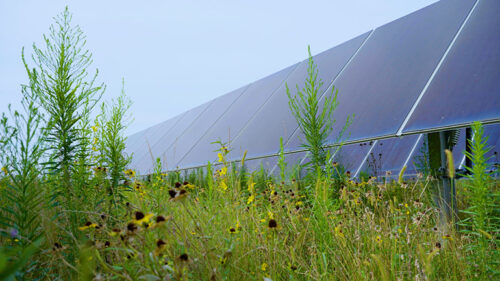
National Grid Renewables has announced the start of on-site construction for its Dodson Creek solar project located in Highland County, Ohio. Once put into operation, the Dodson Creek project located in the PJM market will provide 117 megawatts of clean solar energy and bring approximately $49 million in direct economic benefits to the local community. The project is expected to commence operations in mid-2025. Dodson Creek is the fourth project we have started in Ohio and the second project we have started in Highland County, "said Joe Ibrahim, Vice President of Construction and Engineering at State Grid. This project is the next chapter in our commitment to helping communities across Ohio achieve the economic benefits of clean energy transition Dodson Creek follows closely behind the Yellowbud Solar project operated by National Grid Renewables, which is the first and largest project in its Ohio investment portfolio, as well as its ongoing projects Ross County Solar and Fayette Solar. Overall, in addition to a strong development portfolio, these four projects also represent the entire Buckeye state's 558.5 MW construction and operation project portfolio. Dodson Creek will have a positive impact on the local community in many ways. Throughout the entire construction phase, this 1300 acre project will create and maintain approximately 200 construction jobs. Dodson Creek has signed a contract with Kiewit to become its engineering, procurement, and construction (EPC) partner. Brian Koller, Vice President of Kiewit Power Constructors Co., said, "Our fourth collaboration with NG Renewables on the Dodson Creek solar project demonstrates our enduring partnership and commitment to renewable energy. We value the strong relationships we have established with local unions and Highland County communities. Kiewit is proud to contribute to a sustainable future through the Dodson Creek solar project In order to continue the long-term partnership with First Solar, the Dodson Creek project will adopt the next-generation 7-series modules developed and produced by First Solar at its Toledo manufacturing plant in Ohio.
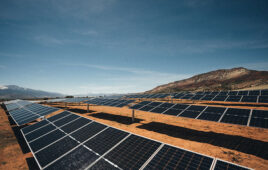
Nevados is a solar tracker developer whose products can adapt to uneven terrain and are currently accepting orders for their new TRACE solar tracking solution. TRACE is Nevados' new generation all terrain tracker designed for steep and undulating terrain with slopes up to 37%, which can protect the native surface soil. Through TRACE, Nevados has updated the mechanical operation of the system, integrated software and controls, including features such as 75 ° hail storage, further reducing the risk of wind, snow, and hail to the project. It has terrain aware backtracking function, which can reduce shading and thus increase energy production. Yezin Taha, CEO and founder of Nevados, said, "Through TRACE, we have turned the all terrain tracker (already the most powerful and easy to install product on the market) into a more cohesive and fully functional product Project risk mitigation measures Bidirectional automatic retraction, accelerating windproof and hail resistant retraction. 75 ° Hail Stow can reduce the probability of maximum damage (PML) caused by hail. Flood, rainwater, and system protection storage protocol. TRACE adopts a backtracking rotation plan that considers specific terrain profiles to reduce the impact of background. This feature is a standard configuration for every tracker. These rotation plans can be distributed between rows to increase production, and the system can consider diffuse light. TRACE uses Kinematics ST Drive, which does not require lubrication and therefore requires minimal maintenance The total number of parts in the system has been reduced by 35% and comes with pre installed materials. The system can be installed using Milwaukee Tool's controlled torque impact wrench. Nevados also provides an O&M dashboard for system management, which includes access to system history. As flat or gentle slopes become increasingly scarce and expensive, the solar energy industry needs solutions more than ever that can adapt to the world's diverse terrains, "Taha said. We constantly innovate and redefine the possibilities of solar energy development. We are able to achieve rapid and efficient deployment on sites that were previously considered too complex or costly Nevados is currently accepting orders for the TRACE all terrain tracking system, which is expected to be delivered in the second quarter of 2025. This system can be ordered as a fully qualified domestic content tracker for the US market, helping solar developers meet additional tax credit requirements under the Inflation Reduction Act. The TRACE system will be exhibited at Nevados RE+booth D24705 in Hall D of the Anaheim Convention Center from September 9th to 12th. News from Nevada
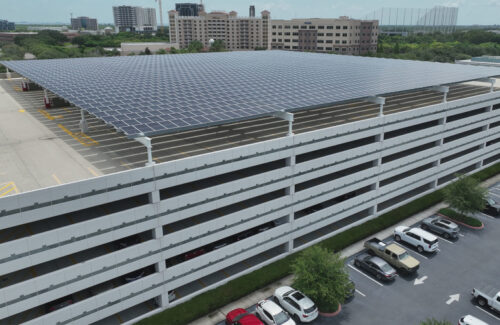
Advanced green technology has completed two large solar powered parking garages at Raymond James Financial headquarters in St. Petersburg, Florida. The characteristic of this renewable energy project is the distribution of 170 kilowatts of solar power generation capacity on two car parking lots in the existing parking lot. The first phase of construction covered the P4 parking lot, adding 1 MW of solar power generation capacity, and the second phase included the P3 parking lot, adding 700 kW. The solar structure provides approximately 2.6 million kilowatt hours of electricity annually, meeting about 60% of the energy needs of Raymond James' two main office buildings. Compensating for nearly 60% of the energy load in multi story Grade A office buildings is a significant achievement, "said Clint Sockman, Executive Vice President of AGT. Raymond James has demonstrated leadership in the ESG field by investing in projects that his clients believe in, which is truly remarkable. The design of a solar powered parking shed can withstand winds of up to 150 miles per hour, which is essential for Florida's tropical climate. These parking sheds are equipped with Trina Solar's 450 watt solar panels and Jinlang's 100 kilowatt series inverters, reaching up to 60 feet in windy coastal areas. AGT's innovative serrated roof design is made of powder coated steel from the United States, which reduces wind pressure and enhances the streamlined appearance of the parking shed.

Atos Solar has just announced that it has established a partnership with SolarCycle to provide recycling services to its American customers, which may be the first of its kind for a silicon solar panel manufacturer operating in the United States. SolarCycle will become Canadian Solar's preferred recycling partner, and Canadian Solar will provide pre recycling services upon purchase. Canadian Solar customers can now receive recycling services when purchasing solar panels. Suvi Sharma, CEO and co-founder of SolarCycle, said, "By offering upfront recycling services as an additional service to the price of solar modules, Atos Solar is helping drive the entire industry forward to ensure we truly achieve sustainable development from cradle to cradle. We will review their leadership at this moment, which is one of the key strategies for the solar industry to integrate our core values into core operations At present, it is unclear how much the additional recycling fee will be and when the agreement will officially come into effect.
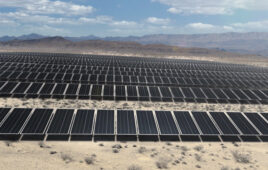
The Bureau of Land Management (BLM) announced today its proposed roadmap for developing solar energy on public lands, aimed at expanding permits for efficient and environmentally friendly solar energy projects on public lands in the western region. The final utility scale solar plan environmental impact statement and proposed resource management plan amendment (also known as the proposed updated Western Solar Plan) released today coincides with the Biden Harris administration releasing new data on improving the federal licensing process to help more projects be carried out more efficiently across the United States. The updated Western Solar Plan will help build a modern and resilient energy infrastructure, creating a strong clean energy economy and protecting our communities from the worsening effects of climate change, "said Steve Feldgus, Chief Deputy Assistant Secretary for Land and Mineral Management. Through extensive planning and collaboration, we not only protect our public lands, but also ensure faster and more efficient licensing of solar projects, avoid conflicts, and achieve an appropriate balance while advancing clean energy and protecting the environment The proposed updated Western Solar Plan was developed based on public feedback and will guide BLM's management of solar proposals and projects on public land. This plan will make over 31 million acres of public land in 11 western states available for potential solar development, with development sites located near power lines or previously damaged land, and avoiding protected land, sensitive cultural resources, and wildlife habitats. This plan updates and expands the original 2012 Western Solar Plan to reflect technological changes and meet higher demand for solar energy development. In addition to the six states originally planned for analysis, the plan also analyzed five other western states (Idaho, Montana, Oregon, Washington, and Wyoming). The updated Western Solar Plan is a responsible and pragmatic strategy aimed at developing solar energy on public land in China, supporting national clean energy goals and long-term national energy security, "said Tracy Stone Manning, Director of the Land Management Bureau. It will promote responsible development of solar energy in areas with less potential conflict, while helping the country transition to a clean energy economy, further fulfilling the mission of the Land Management Bureau to maintain the health, diversity, and productivity of public lands for use and enjoyment by present and future generations The proposed solar energy project will still undergo location specific environmental review and public opinion solicitation. This final statement follows the draft for public consultation released in January 2024, with stakeholder feedback helping BLM make additional updates that will help protect wildlife habitats and migration corridors, as well as other key resources, while clarifying low conflict areas and project design methods to t...
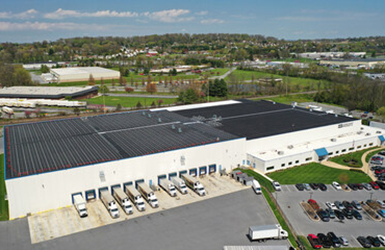
Dynamic Energy has partnered with Cooper Bottom Wholesale Co. to complete a 907 kW commercial rooftop solar project. Cooper Bottom Wholesale Co. is a full-service distributor of convenience store products in the mid Atlantic. The project is located on a 61000 square foot industrial roof at the company's warehouse and headquarters in Muntville, Pennsylvania, and will offset Cooper Booth's rising energy costs while driving the company's green energy plan. Barry Margolis, President of Cooper Tooth Wholesale Company, said, "Working with Dynamic Energy was a great experience. Considering the significant energy-saving effects and positive impact on our sustainable development goals, choosing to use solar energy was an easy decision. This project is in line with our commitment to reducing our environmental footprint and is also a reasonable financial investment Dynamic Energy is headquartered in Pennsylvania and has extensive experience in developing and building clean energy solutions in the Mid Atlantic region and across the United States. Dynamic developed, designed, and built the Cooper Booth project to maximize the use of state and federal solar energy incentives. As a developer partner, Dynamic collaborates with local utility companies and jurisdictional agencies (AHJ) to manage complex interconnections, licensing, and installations. Oliver Davis, President of Dynamic Energy, said, "Dynamic is honored to collaborate with Cooper Tooth to support its energy needs and sustainable development goals. In addition to being a wise capital investment, the project will also reduce grid congestion and provide an economically effective way to reduce corporate emissions. Finally, the partnership with Cooper Tooth highlights Dynamic's mission to allocate energy and create change
Categories
New Products
Tin Roof Rapid Solar Mounting System with Hanger Bolt Read More
Residential Small Solar Easy Bracket Kit for Home Balcony Read More
Automatic Single Pile Solar Tracker with 10 PV Panels Read More
Angle Adjustable Aluminum Easy Solar Panel Bracket for Garden Read More
Intelligent Single Post Dual Row Solar Tracking System Read More
5000ES Solar Off-Grid Energy Storage Inverter Supplier Read More
Multi Drive Double-Sided Single Axis Tracker System Read More
© Copyright: 2025 Xiamen Wintop New Energy Tech Co., Ltd.. All Rights Reserved.

IPv6 network supported
Friendly Links:
Integrated Solar System